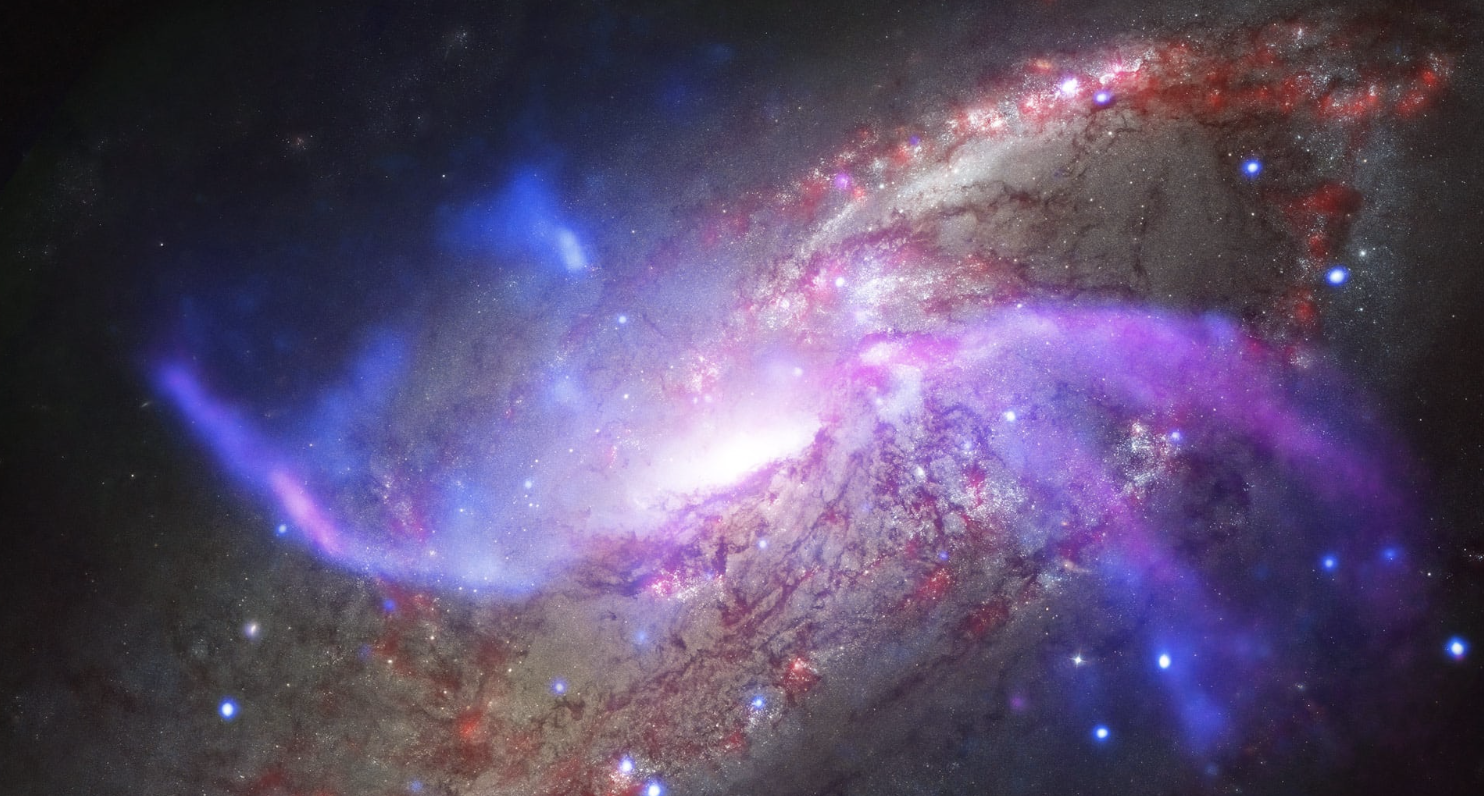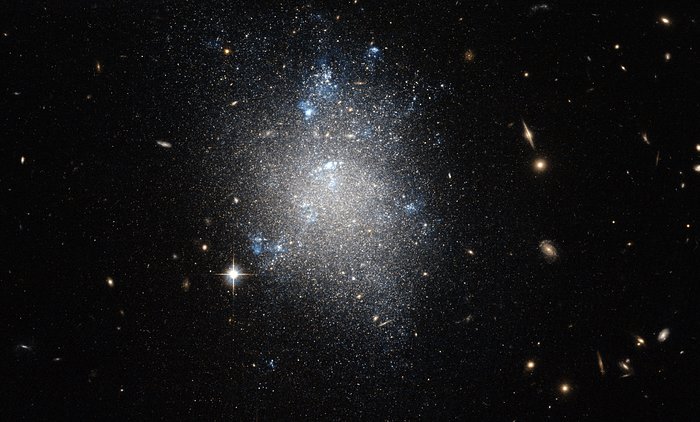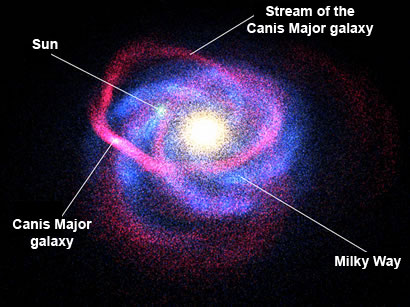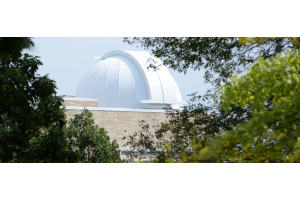
When you think of a galaxy, you might think of a huge whirlpool of stars in space, but not every galaxy is like this. Besides regular spiral galaxies, there are barred spirals, elliptical, irregular, and even dwarf galaxies. Of the last type, the Canis Major dwarf galaxy has one unique attribute that sets it apart from the rest - but what is a dwarf galaxy? And what’s so special about the Canis Major dwarf galaxy in particular?
What is a Dwarf Galaxy?
Dwarf galaxies are appropriately named. Regular galaxies can be hundreds of light-years in diameter, but dwarf galaxies are typically just a fraction of the size. For example, our own Milky Way is a pretty average-sized galaxy; it’s about 100,000 light-years across and is thought to contain more than 100 billion stars.
The largest known galaxy, IC 1101, is roughly four million light-years across and is thought to contain 100 trillion stars. At the other end of the scale, dwarf galaxies are usually only a few thousand light-years in diameter and contain millions of stars. However, what they lack in size they make up in numbers, as they’re often the satellite galaxies of their larger cousins. As such, there are far more dwarf galaxies than regular galaxies in the cosmos.
The Milky Way and its nearest major galactic neighbor, the Andromeda Galaxy, both have at least 13 dwarf galaxies orbiting it, and with hundreds of billions of other galaxies in the universe, the number of satellite dwarf galaxies soon adds up.
Until fairly recently, no one understood how dwarf galaxies formed. Some theorized they were the cores of galaxies stripped of stars during interactions with other galaxies. However, the current theory is a little different.

Image Credit: ESA/Hubble & NASA
It’s still believed they form when larger galaxies interact with one another, but rather than being the cores of galaxies that lose the tug-of-war, it’s thought they’re formed from stars that were originally a part of a galaxy’s general population.
As the two galaxies slowly pass each other in space, their interaction causes streams of stars to be pulled away from their host galaxy. These stars then cluster together to form the dwarf galaxy.
So what makes the Canis Major dwarf galaxy stand out from the crowd?
Is the Canis Major Dwarf Galaxy Actually Galactic?
The Canis Major dwarf galaxy isn’t the largest of the dwarf satellite galaxies that orbit the Milky Way. That honor belongs to Antlia II, a dwarf galaxy roughly 9,500 light-years in diameter and over 400,000 light-years away.
That particular dwarf galaxy wasn’t discovered until 2018 and prior to that, the largest known dwarf galaxy was the Sagittarius Dwarf. Discovered in 1994, the Sagittarius Dwarf is about 8,500 light-years in diameter and is located over 65,000 light-years away.
The Sagittarius Dwarf orbits the galaxy at a distance of about 50,000 light-years and has completed at least ten orbits in its lifetime. During that time, it’s thought the dwarf galaxy has disrupted stars at the heart of the Milky Way, sparked star formation, and may even be responsible for the Milky Way’s spiral arms.
In comparison, with a diameter of nearly 5,000 light-years, the Canis Major dwarf galaxy is the fifth largest of the known dwarf galaxies. However, at an approximate distance of 26,000 light-years, it’s closer than both Antlia II and the Sagittarius Dwarf, making it the closest dwarf galaxy to the Sun.
Despite its classification as a dwarf galaxy, it’s not lightweight. It’s thought to contain about a billion stars, roughly the same number as the Sagittarius Dwarf, but packed into an area less than two-thirds the size.
It’s named for the constellation in which it’s located - Canis Major - but unfortunately, you’ll be out of luck if you try to see it for yourself. While it covers an impressive 144 square degrees, its stars are too thinly spread for the galaxy as a whole to be seen with the naked eye.
However, there are a number of globular clusters that once belonged to the Canis Major dwarf galaxy, but have since been stolen by the Milky Way. The brightest of these is NGC 2808, one of the most massive globulars, with over a million stars. Unfortunately, it’s located in the constellation Carina and can only be observed from the southern hemisphere.

Image Credit: Nicolas Martin & Rodrigo Ibata, Observatoire de Strasbourg, 2003.
On the plus side, northern hemisphere observers have access to M79, a magnitude 8 globular in the constellation Lepus, the Hare. You can find it within the same binocular field of view as both Nihal (Beta Leporis) and Epsilon Leporis, but you’ll need a telescope to track it down.
All this being said, the Canis Major dwarf galaxy is not without its controversy, as its status as a dwarf galaxy has been called into question. More specifically, it’s also known as the Canis Major Overdensity, as some astronomers believe these stars don’t form a dwarf galaxy at all but are part of a warped section of the galactic disc instead.
Either way, time is running out, as it will eventually merge with our own galaxy, and the stars that once formed it will become citizens of the Milky Way. As spectacular as this sounds, if you’d like to see this for yourself you’re out of luck, as it won’t be happening for another billion years or so!

Learn More
Interested in learning more about galaxies and the universe? Not sure where to begin? Check out our Astronomy Hub to learn more!
This Article was Last Updated on 08/14/2023











